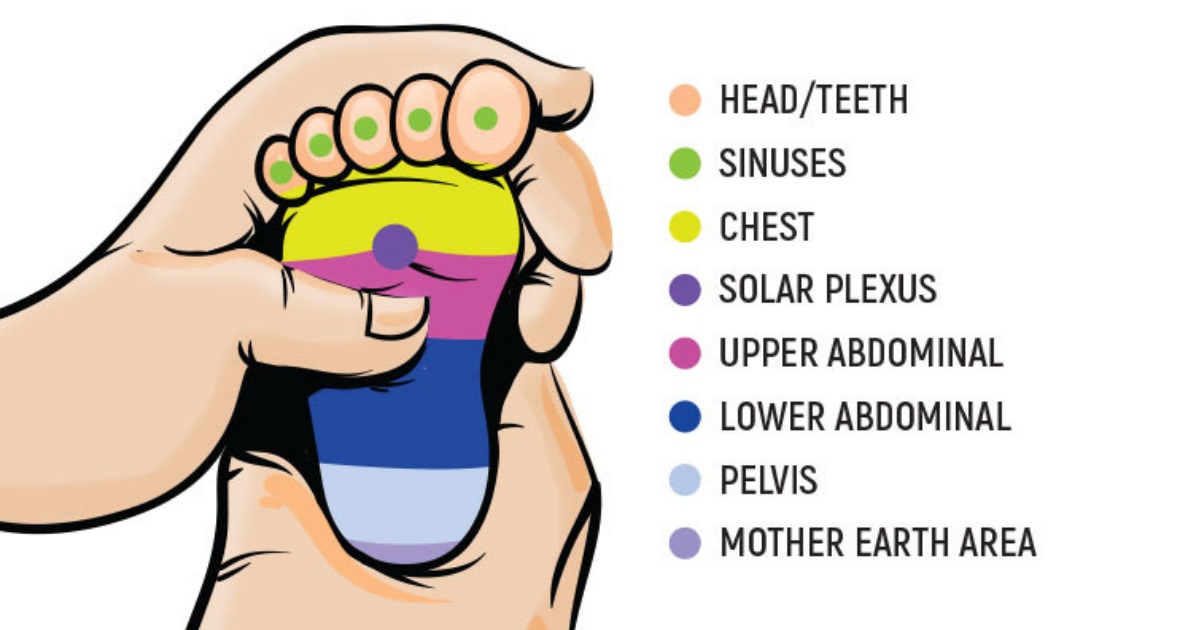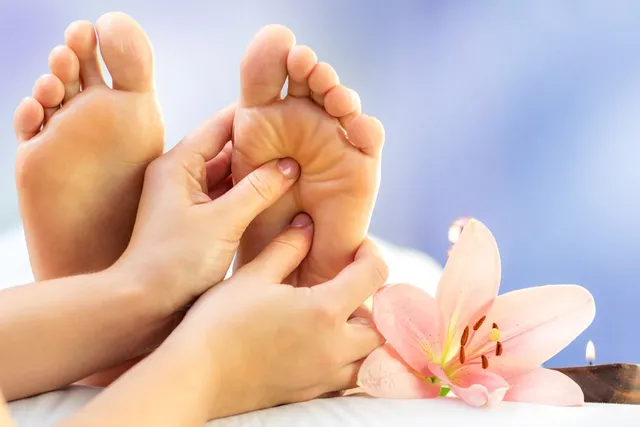Massage These Stress Points to Immediately Relax a Crying or Fussy Baby

As a new parent, navigating the challenges of soothing a crying or fussy baby can feel overwhelming. If you haven’t yet heard of reflexology, it might be a helpful tool to add to your parenting toolkit. Reflexology is based on the principle that certain points on the feet and hands correspond to different organs, muscles, bones, and body systems. By massaging these points, you can often alleviate discomfort and help your baby feel more relaxed.
What is Reflexology and How Does It Work for Babies?

Reflexology has been found to be especially effective for babies, as they tend to respond well to gentle touch. According to nia.nih.gov, reflexology can be a great way to calm babies who are cranky, uncomfortable, or crying. This technique can be used to soothe a variety of discomforts, from tummy aches and headaches to sinus discomfort.
Once you learn the pressure points on your baby’s feet, you’ll be able to provide relief for their discomfort. Let’s dive into the specific reflexology points that can help relax your baby and ease their pain.
1. Soothing Sinus Pain
Sinus pain is uncomfortable for anyone, and it can be particularly distressing for babies. Healthychildren.org explains that sinus inflammation can lead to discomfort and congestion. To relieve this, gently massage the soles of your baby’s feet, right beneath the toes. According to The Healthy Lifestyle, applying light pressure to this area can calm your baby and help ease the sinus discomfort. Be careful not to press too hard, as babies’ feet are delicate.
2. Relieving Teething Pain
Teething can be one of the most painful experiences for a baby. Modern Reflexology notes that teething can cause intense toothaches and headaches. To provide relief, gently massage the tips of your baby’s toes. This simple massage can relax your baby and alleviate the pain. Additionally, it can help them fall asleep more easily during this uncomfortable phase.
3. Alleviating Stomach Pain
Stomach pain can make both babies and parents feel helpless. Whether it’s from gas, bloating, or digestion issues, babies can experience significant discomfort. The Healthy Lifestyle suggests massaging the center of your baby’s toes in a circular motion. This area is connected to the solar plexus, which contains nerves that help regulate the stomach and lungs. This gentle massage can provide relief from tummy aches and digestive discomfort.
4. Relieving Chest Congestion
If your baby is suffering from chest congestion, reflexology can help clear up some of the discomfort. Karen Stoner, the owner of A Caring Touch: Massage Therapy, notes that massage helps fluids move more easily through the body. To ease chest congestion, gently massage the arch of your baby’s foot. Use a circular motion to help break up congestion and encourage it to move out of the system. This can bring your baby some comfort and aid in relieving chest tightness.
5. Relieving Pelvic and Hip Pain
Pelvic and hip pain is another common discomfort that babies can experience. According to The Healthy Lifestyle, massaging the heel of your baby’s foot can help alleviate this pain. This pressure point can also ease symptoms of constipation and soothe the digestive system, bringing relief to your baby. Massaging the heel in gentle, circular motions can be especially beneficial for hip discomfort.
6. Easing Abdominal Pain
Abdominal pain in babies is common and can stem from various sources such as colic, intussusception, or even viral or bacterial infections. Healthychildren.org outlines these different types of abdominal pain, which can cause significant discomfort for your baby.
To help relieve abdominal pain, The Healthy Lifestyle suggests massaging between the soles and the middle of your baby’s foot. If your baby is experiencing bloating, focus on massaging between the heels and the middle of the foot. These areas are associated with the digestive system and can help alleviate bloating and discomfort. Always apply gentle pressure, as your baby’s feet are very sensitive.
For more severe abdominal pain, however, reflexology should be seen as a complementary practice. The Healthy Lifestyle advises that if your baby is experiencing intense or prolonged pain, you should consult a doctor immediately. Reflexology is effective for light discomfort but is not a replacement for medical treatment in more serious cases.
Additional Tips for Using Reflexology with Your Baby
Create a Relaxing Environment
Before you start massaging your baby’s feet, make sure the environment is calm and peaceful. Dim the lights, play soft music, and ensure that your baby is comfortable. A soothing environment will help them relax and respond better to the massage.
Use Gentle, Slow Movements
Always use gentle and slow movements when massaging your baby’s feet. Babies’ feet are sensitive, and applying too much pressure can cause discomfort. Focus on providing a relaxing experience rather than trying to apply firm pressure.
Establish a Routine
Incorporating reflexology into your daily routine can be an excellent way to keep your baby relaxed and help prevent discomfort. You can massage your baby’s feet before bedtime, after a bath, or anytime they seem a bit fussy.
Reflexology for Calming a Fussy Baby
Reflexology is a powerful and natural way to help calm a crying or fussy baby. By massaging specific points on their feet, you can provide relief from various discomforts such as teething pain, sinus issues, tummy aches, and chest congestion. As a parent, it’s comforting to know that there’s a gentle and effective method to help soothe your baby during moments of distress.
Just remember, reflexology is not a replacement for medical care when necessary, but it can be an excellent tool for everyday discomforts. Always listen to your baby’s cues and consult a healthcare professional if you feel their symptoms require further attention.
